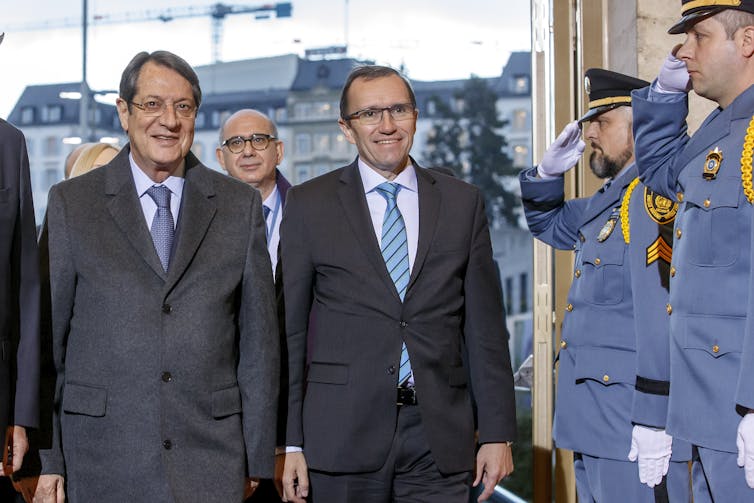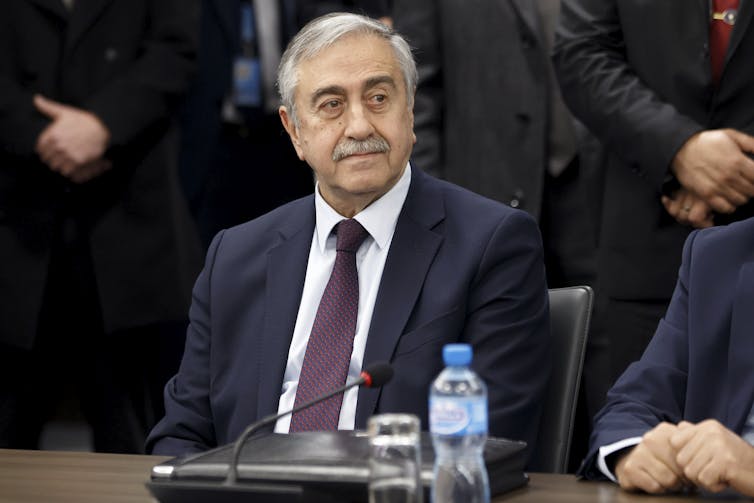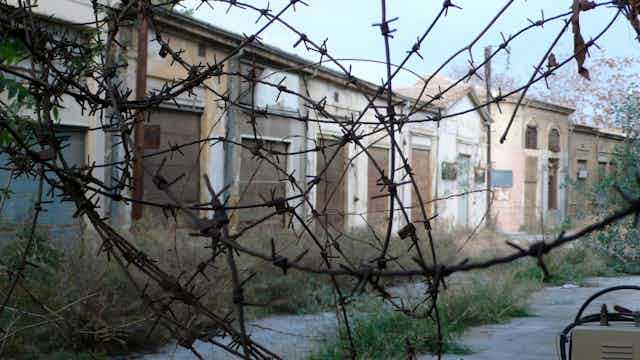Greek and Turkish Cypriot leaders are seeking to resolve a decades-long dispute about the governance of Cyprus in talks happening in Geneva, Switzerland. The island remains divided by a United Nations buffer zone, established to end the conflict between the two sides. But although fighting ceased in 1974, a permanent agreement on how Cyprus should be governed has never been reached. There are several very big questions to answer before that can happen.
What is the main topic of discussion?
Right now, everything is on the table. The first two days of talks between the two Cypriot leaders are intended to lead to a high-level conference with representatives from Greece, Turkey, and the UK.
The original treaties establishing the Republic of Cyprus in 1960 made the two kinstates and the UK guarantors of the new country’s independence.
Among other matters, they will discuss territory – specifically the amount of land that would be allocated to each constituent state in a new federation. This is an issue that concerns the UK because of the sovereign bases that it retained in the island after Cyprus ceased to be a British colony. That land currently amounts to almost 3% of the island.
What led Cyprus to be divided in the first place?
Conflict began during the period of British rule in the 1950s. A Greek Cypriot anti-colonial movement emerged, aiming to unite the island with Greece. The Turkish Cypriot minority consequently agitated against this movement and drew Turkey into the dispute. When Greek Cypriots took up arms to achieve their goal, Turkish Cypriots organised their own guerrilla movement with military aid from Turkey.

The conflict of the late 1950s resulted in an independent Republic of Cyprus with a power-sharing constitution. But many Greek Cypriot leaders found the system unwieldy and wanted change. Violence erupted again in 1963, when the republic broke down and Turkish Cypriots retreated to armed enclaves that were put under military siege.
Although tensions eased in 1968, a second Greek Cypriot guerrilla organisation, disappointed with the failure to unite with the “motherland”, briefly seized power in 1974 in a coup d’etat, which was supported by the junta government in Greece. Turkey used its status as a guarantor power to militarily intervene. The ceasefire line at which the Turkish military’s advance stopped has divided the island since.
What is the current governance system in Cyprus?
The events of 1974 and afterwards displaced around 150,000 Greek Cypriots from the island’s north and around 45,000 Turkish Cypriots from the south. This resulted in a de facto ethnic homogenisation of the island’s two sides. The Republic of Cyprus government, under Greek Cypriot control, became the recognised government for the entire island. Only Turkey recognises the self-proclaimed Turkish Republic of Northern Cyprus.
In practice, this means, for instance, that technically the entire island became part of the EU when the republic gained membership in 2004, but EU law is suspended in the north. Turkish Cypriots can have EU citizenship while living in the north, even though it’s essentially outside the EU. Meanwhile Greek Cypriots live in an EU member state but do not have control over 36% of their territory and cannot exercise rights of movement and settlement there.
How has Cyprus been affected by the stalemate?
Nicosia is Europe’s last divided capital, with streets that deadened at sandbags or lead to checkpoints. In the south, the economy relies on package tourism and, until 2013, the financial sector. The north is isolated, with close economic, political, and social ties to Turkey. Turkish Cypriots often express a sense of being in limbo, affected by globalisation but still cut off from the world.
What is the general mood on the ground today?
The general mood seems to be subdued optimism. Cypriots have lived through the ups and downs of several decades of negotiations, most of which have been labelled the “last chance for peace”. Many were participants in the most important “last chance” in 2004, when Greek Cypriots rejected a UN-sponsored reunification plan in a referendum.
The 2013 financial crisis in the republic triggered a change of heart in the island’s south and a more positive approach to a federal solution.

However, the discovery of gas reserves off the Cyprus coast have had a contradictory effect on the mood. Gas reserves would be best exploited in a united Cyprus, but there is Greek Cypriot concern about Turkish interests.
Conflict and crises in the region have lately led to renewed international interest and incentives for solving the Cyprus problem – although the current chaos in Turkey is an obstacle.
What might governance look like after reunification?
The idea is for Cyprus to become a federation of two ethnically defined states, but we do not know yet if there will be a strong or a weak central government. We also don’t know what competencies will fall to the constituent states, and which ones to the central government, or what rights the citizens of each constituent state will have in the other.
One option still under discussion is a potential rotating presidency, with the rotation again defined along ethnic lines. Turkish Cypriots are very much in favour of such a system, but Greek Cypriots, who make up 80% of the population, overwhelmingly reject it. Similar power-sharing mechanisms, based on community rights, were what got the Republic of Cyprus into trouble in 1963.
What else is under discussion?
Even more than governance, the issues that concern most Cypriots are property and territory. These remain the biggest sticking points.
In 1974, displaced Cypriots constituted about one third of the island’s population. Today, their children and grandchildren think of the possibility of claiming and even returning to the properties they left behind on the “other side”.
Any plan will include some territorial readjustment, meaning that the constituent state in the north will cede territory to the south, allowing the return of Greek Cypriots to their homes. But in 1974 Greek Cypriot properties in the north were distributed to displaced Turkish Cypriots, so giving them back will displace their current inhabitants yet again.
How reunification will look for ordinary people will depend a lot on how many people return to their houses and how much remixing there will be. If very few people return and if territorial readjustment is limited, reunification will look a lot like the island does now, but without borders.
What are the chances of success in these talks?
Slim in this round. Although the Cypriot leaders have demonstrated goodwill and the capacity for cooperation, they entered this intensive round of talks with very little already agreed, even after 18 months of negotiations. All we have right now is their agreement that they want to agree.

